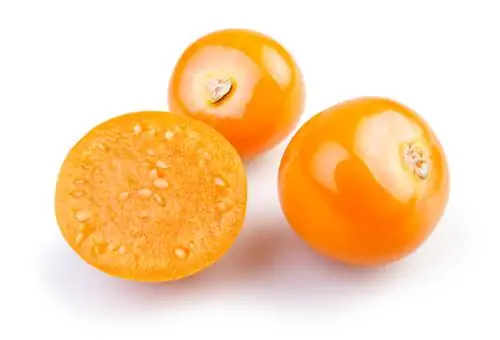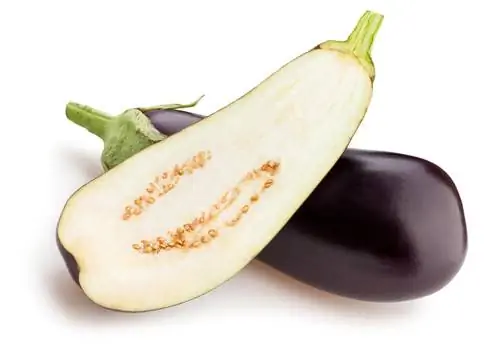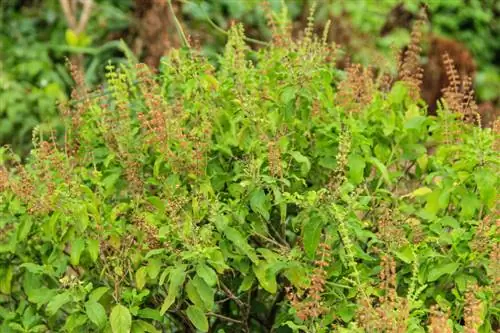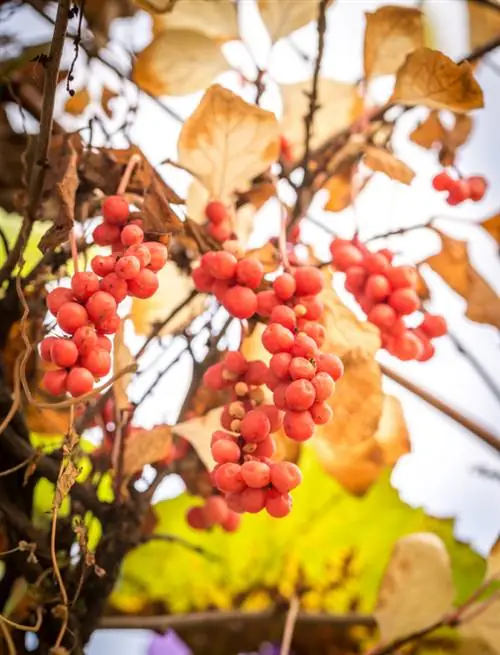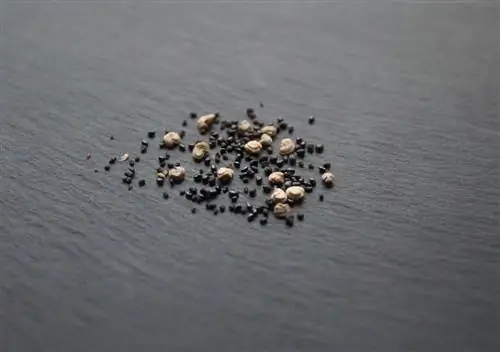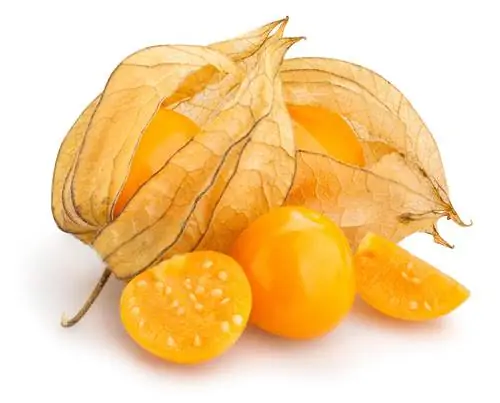- Author admin [email protected].
- Public 2023-12-16 16:46.
- Last modified 2025-01-23 11:20.
Plants of the genus Physalis are very decorative, such as the Chinese lantern flower, which is also native to us, or provide delicious, vitamin-rich fruits such as the Andean berry (also known as the Cape gooseberry) or the pineapple cherry. The lushly growing shrubs can be easily grown from home-grown seeds.
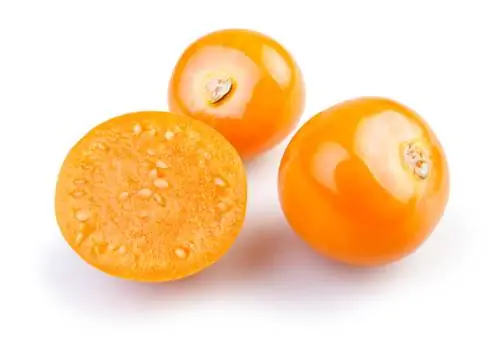
How do I get Physalis seeds?
To obtain Physalis seeds, cut open a ripe fruit, carefully remove the seeds, rinse the pulp and let the seeds dry on a kitchen towel. Store the dried seeds in a dark, cool place and use them for sowing the following year.
Drying seeds
You can get the seeds for the desired Physalis species (note: the fruits of the lantern flower are not edible!) in any well-stocked seed shop (€1.00 on Amazon), in garden centers or on the Internet. But instead of spending a lot of money, you can also grow the seeds yourself. You can use fruits from your own garden (or neighbor's garden) as well as purchased berries from the supermarket. The only important thing is that the fruits are completely ripe. You can tell when it is ripe by the strong orange-red color.
Extracting and drying seeds from Physalis fruits
And this is how you get the desired Physalis seed from the fruit:
- Cut the ripe physalis once in half.
- Carefully pull out the seeds from inside the fruit.
- Use a toothpick or something similar.
- Remove the pulp from the seeds, lukewarm water is best for this.
- Spread the seeds on a kitchen towel and let them drain.
- Then take a new kitchen towel and spread the dried seeds on it.
- Let the seeds dry for several days.
- Pack the dried seeds in a small bag and store in a dark and cool place.
You can use the Physalis seeds obtained in this way the following year either for early cultivation from February / March or for sowing directly outdoors.
Alternative sowing
However, the collection of seeds described above is actually not necessary. In principle, it is sufficient to let a few ripe (previously slightly crushed) fruits fall to the ground in the desired planting location in the fall.to cover them with a little earth. The Physalis sown in the fall will germinate quite reliably. But be careful: This method is only suitable for winter-hardy varieties such as: B. the lantern flower. The warmth-loving Andean berry, on the other hand, cannot tolerate frost, which is why its seeds survive the winter better when dried. Another option is to simply put some fruits on the compost - this provides a lot of heat through the fermentation process and therefore helps the seeds to germinate.
Tips & Tricks
Try the pineapple cherry (Physalis pruinosa), which is little known in this country. This species of Physalis, which comes from North America, does not grow quite as tall as the Andean berry and impresses with small, pineapple-like tasting fruits.

